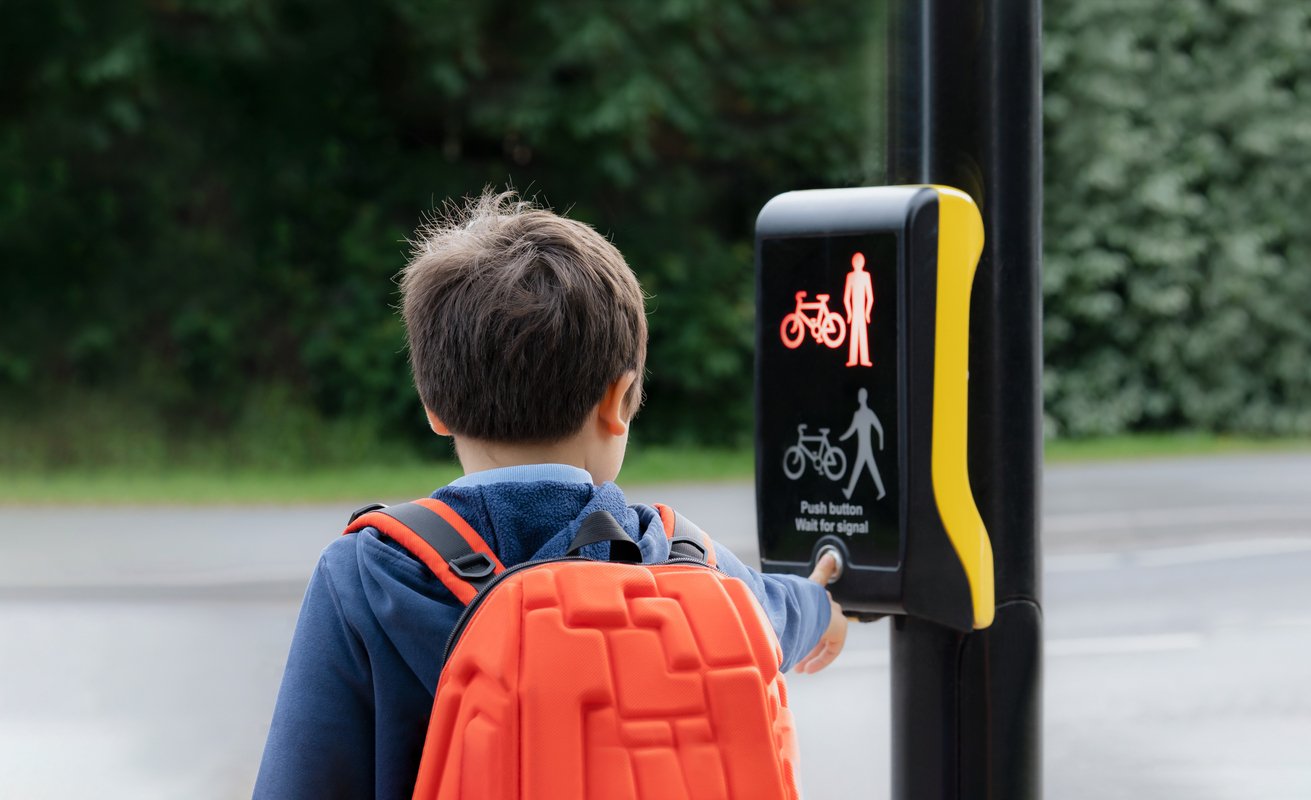According to Parachute, the national organization dedicated to preventing injuries, an average of 16 child pedestrians are killed and 1,300 are seriously injured on Canada's roads every year.
Talking to children about how to be safe around vehicles and roads is important; however, their ability to understand risks changes as they get older. Young children may be able to understand simple street layouts and traffic signs, but the skills needed to navigate complex or urban roadways does not develop until nine to 11 years old. Use age-appropriate language and safety tips as you walk with your child.
Pedestrian safety facts
- Children aged 10 to 14 years are the most likely age group to suffer pedestrian-related injuries. Even more startling, children aged five to 14 years are most likely to be killed by a vehicle.
- Child pedestrians are most often hurt in September and October, followed by May and June. This highlights the role that walking to school plays in pedestrian safety.
- Most child pedestrians are hit by a vehicle in towns and cities with heavy traffic, many parked cars and few play spaces.
- An accident on a rural road is more likely to be fatal because of faster vehicle speeds.
These numbers serve as a reminder about the power of talking about prevention with your child. Teens and adults, especially drivers, also play a big role in street safety.
School road safety tips
The Parachute Elementary Road Safety program has a number of tips that can help make trips to and from school, or anywhere else, safe.
Teach your child
Long before a child will be allowed to roam the streets alone, parents should teach them some basic safety tips. These include walking only on the sidewalk, holding hands and never running into the road, even for a favourite toy.
As your child gets older, you can use events that you see together as opportunities to teach more about pedestrian safety. For example, you might use situations such as changing weather conditions, someone jaywalking or picking the best route to get from one place to another.
Be a role model when walking with your child by demonstrating safe pedestrian practices. As you walk, point out safe areas to cross the road, use available crossing signals, and look “left, right and left again” each time you cross the street. Saying what you are doing aloud can also help draw a child’s attention to your safe behaviours.
Think, look and listen
Teach your child to stop at the curb, look left, right and left again, and listen for oncoming traffic. Your child should consider alleys and driveways as "mini-roads" and treat them with the same level of caution.
Children should not be allowed to wear ear buds or talk on the phone while walking down the street. Talking on the phone, texting and listening to music can all be distracting. Both adults and children need to pay attention to what is going on around them.
Also, note that our alertness fades throughout the day. Most incidents happen between 3pm and 6pm, when drivers are coming from work and children may be walking from school.
Children should know that their hearing is very important for safety. You can play games to encourage your child to listen for traffic. For example, when you hear a vehicle behind you coming down the street, try to guess what it is with your child.
For children who are deaf or hard of hearing, emphasize the importance of looking “left, right and left again”. It is also important that your child not cross the street from behind parked vehicles or large objects, as it can make it difficult for oncoming vehicles to see them. Showing your child visual prompts such as crosswalks, road signs, and vehicle reverse lights can help them decide when and where it is safe to cross.
As your child gets older and more confident making safe walking decisions, empowering them to lead the family while walking gives them time and space to practice pedestrian safety without relying on your guidance.
Wait to let your child walk alone
According to Parachute, children need to develop three important skills before they can walk alone. They need to be able to:
- choose and use a safe crossing route
- accurately assess a vehicle's speed
- judge safe gaps in traffic.
Many children do not develop these skills until they are nine to 11 years old. Until you are confident that your child can be a safe pedestrian, make sure they are supervised.
Sources
Elementary Road Safety. Parachute. Retrieved from https://parachute.ca/en/program/elementary-road-safety/
Pedestrian Safety. Parachute. Retrieved from https://www.parachutecanada.org/en/injury-topic/pedestrian-safety/

